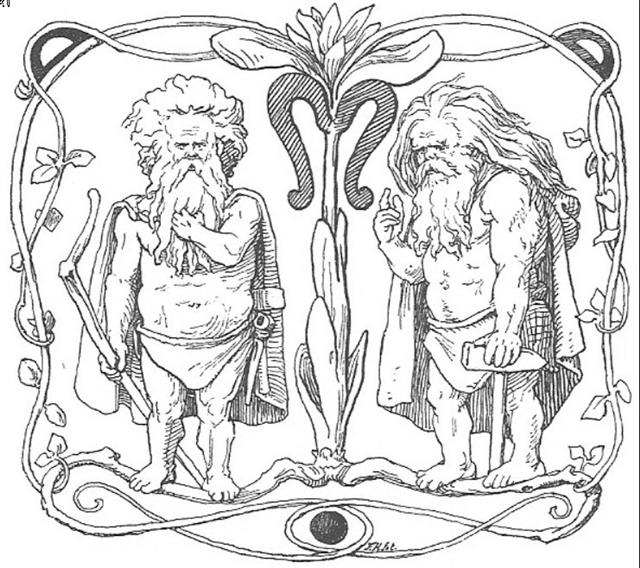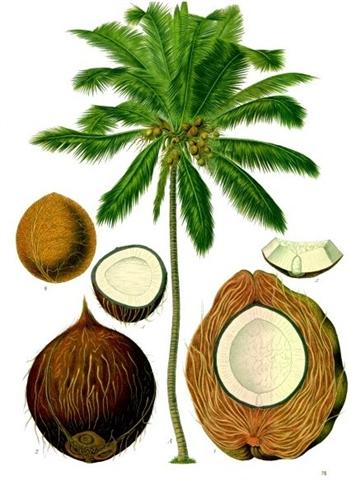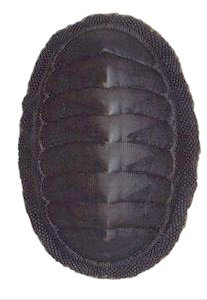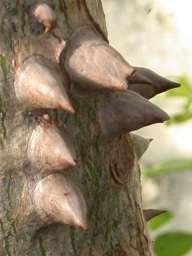Once again. I have perceived the stars Aldebaran (α Tauri) and Antares (α Scorpii) on side a of the G tablet where they evidently could have served as pars pro toto (the alpha designation of Bayer probably indicating such a distiction). Aldebaran was the Sky Bull and Antares was the opposing Scorpion at the horizon in the west: .
... If my suggestion be admitted that the Babylonians dealt not with the daily fight but with the yearly fight between light and darkness - that is, the antithesis between day and night was expanded into the antithesis between the summer and the winter halves of the year - then it is clear that at the vernal equinox Scorpio setting in the west could be watching the sunrise; at the autumnal equinox rising in the east, it would be watching the sunset; one part would be visible in the sky, the other would be below the horizon in the celestial waters. If this be so, all obscurity disappears, and we have merely a very beautiful statement of a fact, from which we learn that the time to which the fact applied was about 3000 B.C., if the sun were then near the Pleiades ... (Lockyer) The perfectly drawn images on side a of the G text - at heliacal Aldebaran and Antares - are examples of the vaha mea (red opening) type of glyph respectively of the mago (shark) type of glyph, as I have named them, and they can be contrasted with other similar but less distinct shapes where other readings could be relevant. For instance could mago in Cb2-10 have been intended to illustrate the nakshatra side where the Yed Door (δ and ε Ophiuchus) was half a year away from the Door at the rainy Hyades - because the Heart 'stone' σ Scorpii was 'around the corner':
Similarly could the niu type of glyph here have been used to illustrate a correlation with the vaha mea type of glyph:
My example of the niu type of glyph has a rounded bottom with no signs of roots and it was therefore probably a young one and hardly a nikau - a grown up.
But I think the niu pair in Cb2-8--9 could have represented the very last stage - the bridge across from the fully mature to the next generation:
... When viewed on end, the endocarp and germination pores give the fruit the appearance of a coco (also Côca), a Portuguese word for a scary witch from Portuguese folklore, that used to be represented as a carved vegetable lantern, hence the name of the fruit. The specific name nucifera is Latin for nut-bearing ... They had to be a pair (as for instance in Gemini) - one for each half of the year ('year in leaf' and 'year in straw'). And they may have represented - pars pro toto - both the ni Tree (the King) and his yoni Flower (Pua):
 Below this central King Tree in Flower we can see the black new moon sign. ... When the new moon appeared women assembled and bewailed those who had died since the last one, uttering the following lament: 'Alas! O moon! Thou has returned to life, but our departed beloved ones have not. Thou has bathed in the waiora a Tane, and had thy life renewed, but there is no fount to restore life to our departed ones. Alas ...
A dwarf is a little figure, yet very old. Above at left we can perceive Pollux en face - like a Full Moon, Hotu, - with what appears to be an Γ-shaped astronomer's staff for observing meridian transits, while at right the likeness of Castor appears to have a water bottle hammer in his left hand. There is a resemblance in composition with that of the Maize Tree King growing out from the broken carapace of the Earth Turtle:
... Most of the people in our van took advantage of the interlude to shop at the nearby stalls set up by highland Maya who had come down to Tikal to take advantage of the steady supply of tourists. However, one of our group, Harriet Gillett, a retired physician and an inveterate bird-watcher, had other interests. She noticed a nearby tree hevy with white blossoms and surrounded by a raucous sphere of birds and bees. She climbed out of the van with her binoculars around her neck, and walked over to take advantage of the unexpected opportunity the morning had provided. Our local guide, Francisco Florián, who knew the forest and its creatures in an unusually intimate way, joined her, explaining that the birds came to the tree only early in the morning. The sounds and the odd sight finally drew my attention and I too disembarked from the van and edged closer to the buzzing center of the action. I stared at the screaming birds as they fought for positions among the flowers and the hovering drone of thousands of bees. How beautiful, I thought, and then my gaze happened to settle on the trunk of the tree. It had thorns and it bulged just above the ground. It was a young ceiba tree.
I already knew that the ceiba tree was the model for the sacred World Tree of the Maya, but I had never seen one in flower when I knew what I was looking at. I was really excited because normally you can't see the blossoms even if you're there when the tree is in blossom. The fully mature trees are hundreds of feet high. and the blossoms are very small. 'It's a ceiba', I chirped and began looking for a branch low enough to see one of the blossoms up close. Joyce Livingstone, a retired teacher, did the logical thing. She bent over, picked up a fallen branch, and held it out for me to see. I was too excited and full of myself to listen. She tapped my arm more insistently and still I didn't hear her. Finally, in frustration, she grabbed my wrist and raised her voice. 'Will you look at these?' she said, waving the branch, and finally I did. What I saw stunned me, for in her hand lay a perfect replica of the earflares worn by the Classic Maya kings. Suddenly I understood the full symbolism of so many of the things I had been studying for years. The kings dressed themselves as the Wakah-Chan tree, although at the time I didn't know it was also the Milky Way. The tzuk [partition] head on the trunk of the tree covered their loins. The branches with their white flowers bent down along their thighs, the double-headed ecliptic snake rested in their arms, and the great bird Itzam-Yeh stood on their head. I already knew as I stood under the young tree in Tikal that the kings were the human embodiment of the ceiba as the central axis of the world. As I stood there gazing at the flowers in Joyce's hand, I also learned that the kings embodied the ceiba at the moment it flowers to yield the sak-nik-nal, the 'white flowers', that are the souls of human beings. As the trees flowers to reproduce itself, so the kings flowered to reproduce the world ... (David Freidel, Linda Schele, Joy Parker. Maya Cosmos. Three Thousand Years on the Shaman's Path.) |
||||||||||||||||||||||||||||||||||||||||||||||||||||||||||||||||||||||||||||||||||||||||||||||||||||||||||||||||||||||||||||||













